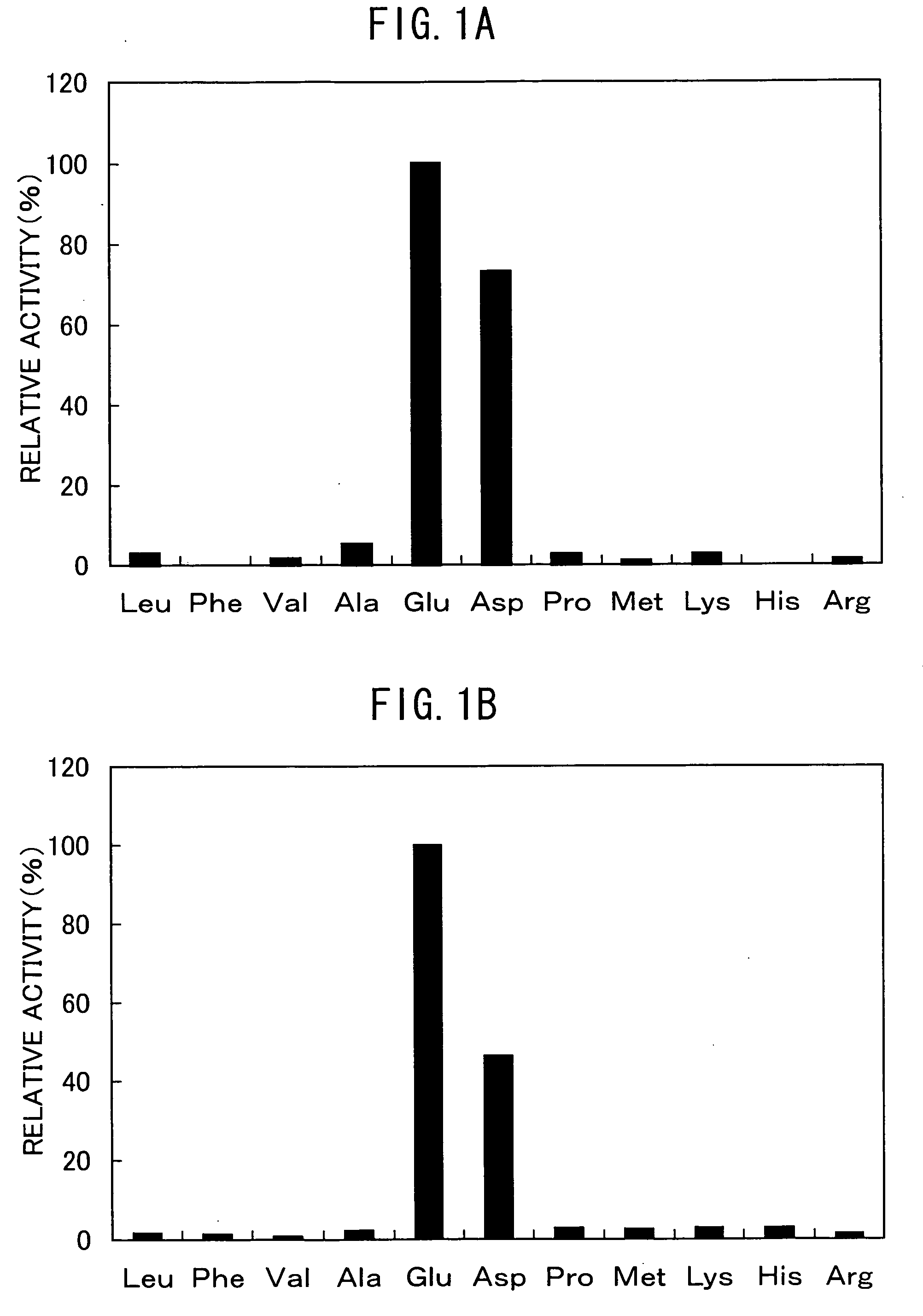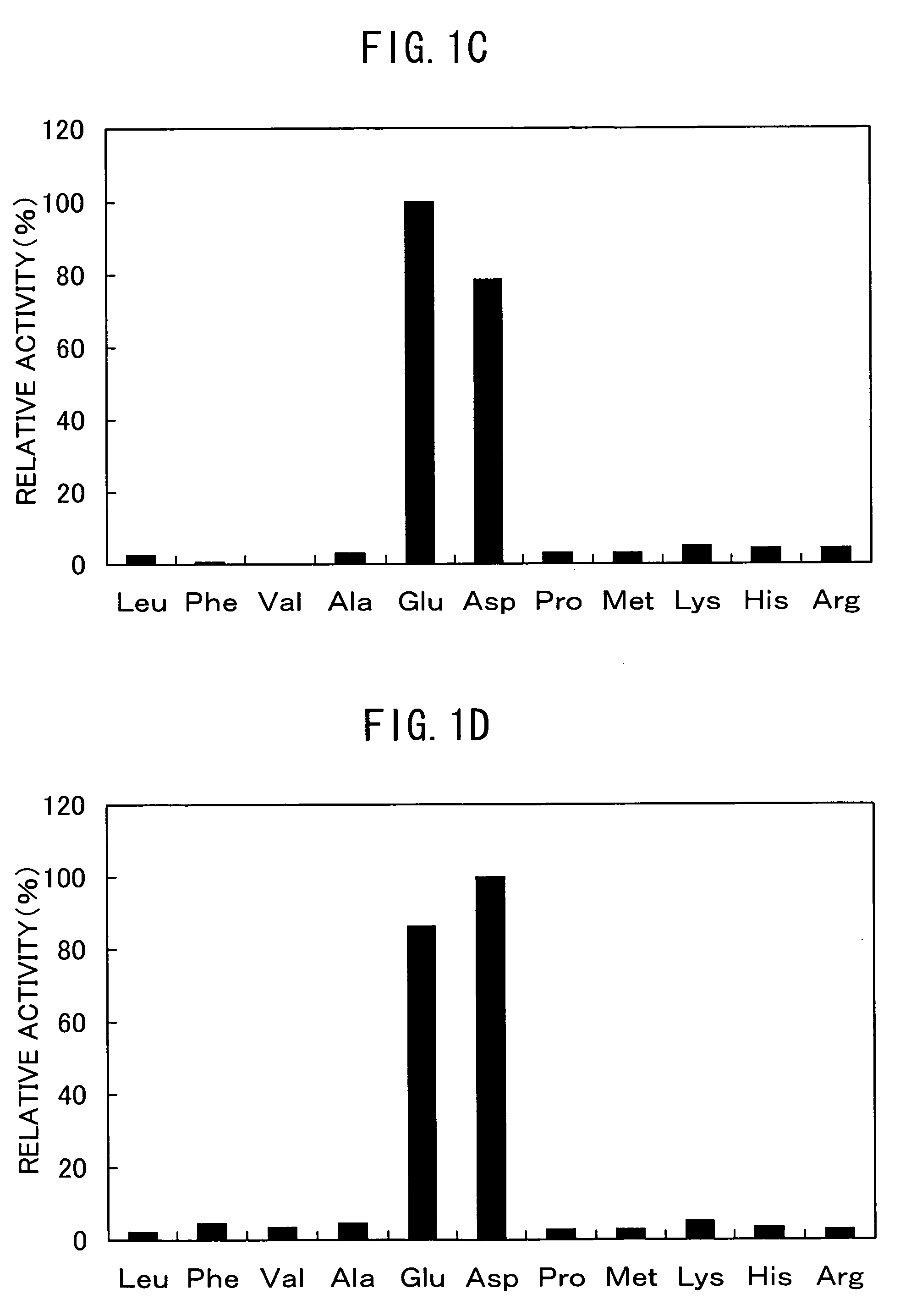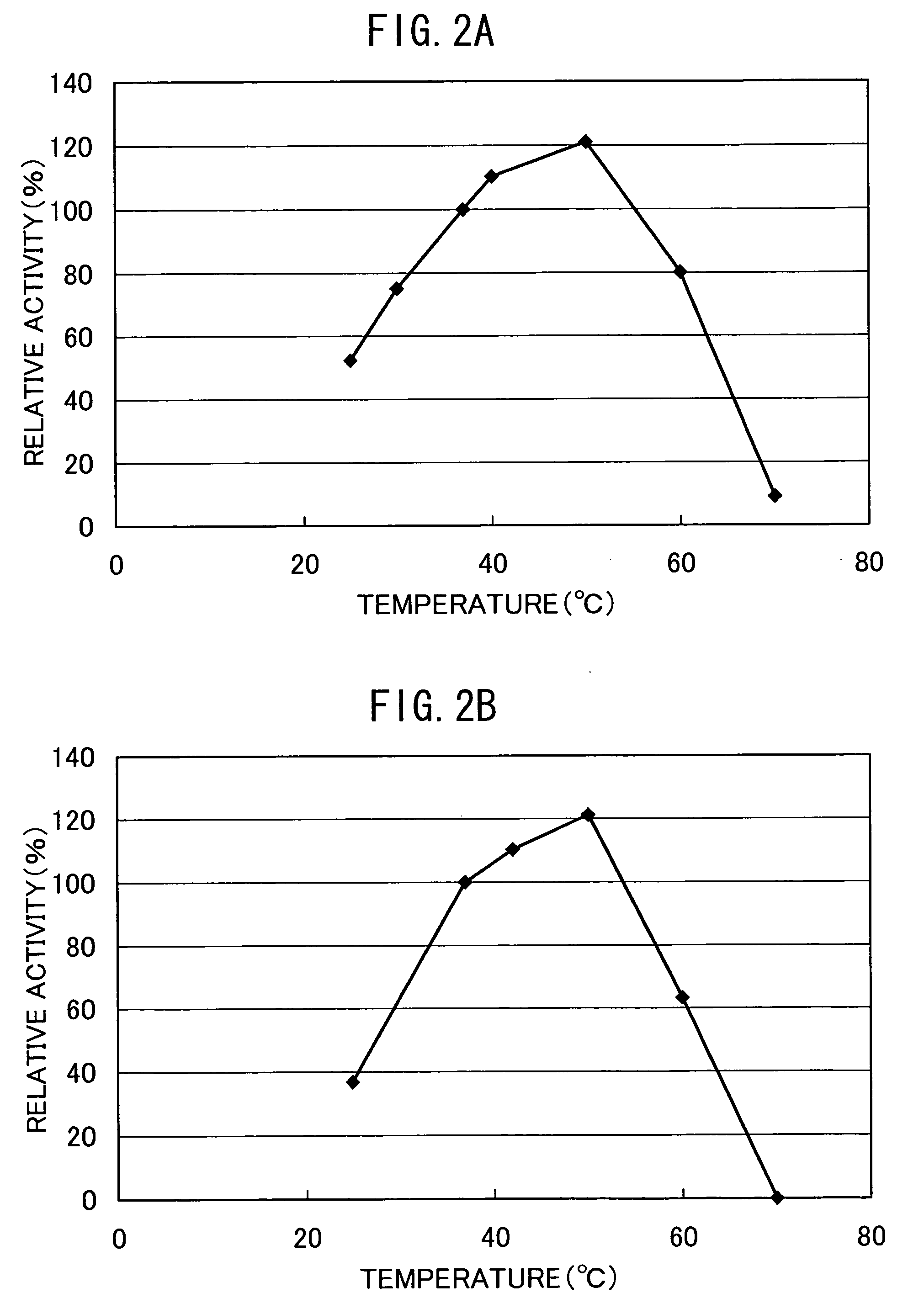Method of improving taste and/or flavour of foods and beverages
a technology of food and beverage taste and flavour, which is applied in the field of improving taste and/or flavour of foods and beverages, can solve the problems of inability to determine the existence of soybean aminopeptidase-like properties from sequence homology alone, and the enzyme having soybean aminopeptidase-like properties cannot be obtained from other sources, so as to achieve the effect of increasing the free glu content and free glu conten
- Summary
- Abstract
- Description
- Claims
- Application Information
AI Technical Summary
Benefits of technology
Problems solved by technology
Method used
Image
Examples
example 1
Cloning of Genomic DNA Encoding Aspergillus nidulans EAP
[0061] The cDNA database of Aspergillus nidulans (http: / / www.genome.ou.edu / fungal.html) was used for a homology search, using the sequence of the aminopeptidase from germinating soybean, and ESTp0f10a1.f1 having high homology was identified.
[0062] The cloning of Aspergillus nidulans EAP from Aspergillus nidulans cDNAs was conducted as follows based on this information.
[0063]Aspergillus nidulans A26 strain (purchased from Fungal Genetics Stock Center, Department of Microbiology, University of Kansas Medical Center) was cultured with shaking at 30° C. for 48 hours in 50 ml of YG medium (0.5% of yeast extract, 2.5% of glucose, 0.1% or trace elements*, pH6.5 (*trace elements=FeSO4.7H2O 0.1%, ZnSO4.7H2O 0.88%, CuSO4.5H2O 0.04%, MnSO4.4H2O 0.015%, Na2B4O7.10H2O 0.01%, (NH4)6MoO24.4H2O 0.005%).
[0064] The cells were harvested, frozen in liquid nitrogen and crushed in a mortar. Total RNA was prepared from the crushed mixture by usi...
example 2
Cloning of cDNA Homologous to Aspergillus nidulans EAP From Aspergillus oryzae
(1) Obtaining cDNA from Aspergillus oryzae
[0068]Aspergillus oryzae RIB40 (ATCC42149) was cultured at 30° C. for 64 hours in 50 ml of a medium containing 1.5% soybean isolate. The bacterial cells were collected by centrifugation to yield 1 g of cells. The cells were immediately frozen in liquid nitrogen and crushed in a mortar, from which a total RNA was prepared with Plant Mini Kit (QIAGEN) and mRNAs were prepared with olligotex-dT30mRNA Purification Kit (TaKaRa). cDNAs were synthesized from the mRNAs by using TakaRa RNA PCR Kit (AMV) Ver.2.1 (TaKaRa).
(2) Cloning of Aminopeptidase Corresponding to the Aspergillus nidulans EAP From Aspergillus oryzae
[0069] Based on the EAP sequence from Aspergillus nidulans obtained in Example 1, a cDNA homologous to the Aspergillus nidulans EAP was cloned from Aspergillus oryzae by 3′ RACE using the oligonucleotide shown in SEQ ID NO:24 and dT primer adapter primer ...
example 3
Cloning of cDNA of EAP from Aspergillus niger, which is Homologous to EAPs from Aspergillus nidulans and Aspergillus oryzae
(1) Obtaining the aminopeptidase cDNA from Aspergillus niger
[0073]Aspergillus niger (JCM2261) was cultured at 30° C. for 64 hours in 50 ml of a medium containing 1.5% soybean isolate. The bacterial cells were collected by centrifugation to yield 1 g of cells. The cells were immediately frozen in liquid nitrogen and crushed in a mortar, and the total RNA was prepared from the cells with Plant Mini Kit (QIAGEN) and mRNAs were prepared with olligotex-dT30mRNA Purification Kit (TaKaRa). cDNAs were synthesized from the mRNAs by using TakaRa RNA PCR Kit (AMV) Ver.2.1 (TaKaRa).
(2) Cloning of Aspergillus niger EAP, Which Corresponds to the EAPs from Aspergillus nidulans and Aspergillus oryzae
[0074] Primers shown in SEQ ID NOs:29 and 30 were designed for the sequence region exhibiting 100% homology between the Aspergillus nidulans EAP obtained in Example 1 and the...
PUM
| Property | Measurement | Unit |
|---|---|---|
| Temperature | aaaaa | aaaaa |
| Fraction | aaaaa | aaaaa |
| Fraction | aaaaa | aaaaa |
Abstract
Description
Claims
Application Information
 Login to View More
Login to View More - R&D
- Intellectual Property
- Life Sciences
- Materials
- Tech Scout
- Unparalleled Data Quality
- Higher Quality Content
- 60% Fewer Hallucinations
Browse by: Latest US Patents, China's latest patents, Technical Efficacy Thesaurus, Application Domain, Technology Topic, Popular Technical Reports.
© 2025 PatSnap. All rights reserved.Legal|Privacy policy|Modern Slavery Act Transparency Statement|Sitemap|About US| Contact US: help@patsnap.com



